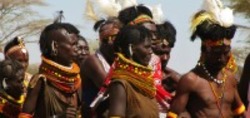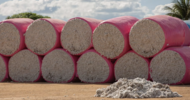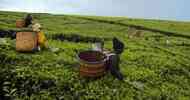Slow Food | 18 Jul 12
by Bess Mucke
Nomadic herders have inhabited the semi-arid plains that stretch across 80 percent of Kenya and 60 percent of Ethiopia for thousands of years, relying on their intimate relationship and understanding of the land, animals and climate. Northern Kenya is home to famous indigenous pastoralists, such as the Maasai, Rendille, Borana, Gabra and Wata, each formed around strong relationships with a certain animal breed that features strongly in their culture.However, in recent years rising temperatures and increased severity of drought periods have lead to conflict, at times bloody, among tribal groups. Exacerbating the situation, these communities are also under threat from a recent spurt of investors and multinational companies interested in putting their money into Kenyan oil, mining, wind farms and agribusiness projects.
The largest, and potentially most devastating of these, is the construction of a massive dam in southern Ethiopia that began in 2004 and is due for completion in 2014. The fragile ecosystems of this region are seriously threatened by the Gilgel Gibe III Dam on the Omo River in Ethiopia - the lifeline of the Lower Omo Valley on the border with Kenya, and the only major water source of Lake Turkana, the world’s largest desert lake.
The incredible biodiversity and ecology of the Turkana Basin has allowed many indigenous communities to form their livelihood from fishing, farming and pastoral activities around the lake, including the Elmolo, Rendille, Turkana, Dassanech, Ariaal, and Samburu, a semi-nomadic pastoralist community related linguistically and culturally to the Massai. Research is showing that Lake Turkana is already shrinking due to decreased rainfall and the loss of flow from the dam will worsen the food security issues the communities are already facing as they fight to maintain their cultures.
“The Omo River is like the fingers of a hand which direct the fresh water into the lake,” said local fisherman Andy Legreson. “The swamp areas provide habitat for animals and if all the fingers are gone there won’t be any Turkana soon or later.”
However this is just the tip of the iceberg. The Gibe III construction phase has already displaced indigenous peoples in Ethioipa, and many are concerned that the new availability of irrigation water from the dam will stimulate massive agribusiness or ‘land grabs’, displacing many more of the regions’ local communities. A report by the Oakland Institute reveals that in the Omo Valley alone, 350,000 hectares of land has already been leased to foreign investors for sugarcane and cotton crops, and that the associated water use from the Omo River will impact the lives of around 500,000 agro-pastoralists.
Referring to land deals in Ethiopia’s South Omo valley, Oakland Institute policy director and coordinator of the Understanding Land Investment Deals in Africa project Frederic Mousseau, told International Rivers: “these large land deals benefit investors and business interests who have other options for where to put their money, but those who stand to lose from the projects are people who rely on the waters of the Lower Omo River and Lake Turkana, in both Ethiopia and Kenya.”
Last week on July 11, the World Bank voted to approve funding credit for the major transmission line to link Kenya to the dam, thus allowing Ethiopia to sell electricity to its neighbor. The decision follows months of calls by local and international rights and environmental groups to keep out of the project and the Banks own refusal to fund the dam itself, citing a lack of transparency.
"For us, the World Bank's double standards are unacceptable," Ikal Angelei, from Friends of Lake Turkana, a group of local communities that would be affected by the dam, told IPS. "If the dam did not meet standards earlier, how can they fund what is produced by the dam?"
Similar situations are happening all across the region on a smaller scale. The Ewaso Nyiro River, which originates from Mount Kenya, supported the Borana pastoralists in the lowlands of north-east Kenya until large foreign-funded horticulture operations along the river in the highlands and Rift Valley began consuming massive quantities upstream. Less water remains to support Borana leading to hostility between them and the Gabra and Waata peoples.
It is time for northern Kenya’s tribes to set aside their recent conflict with one another and unite in the fight against their common problem - land grabbing. Allowing massive tracts of land in this region to be taken over by foreign business will result in a widespread loss of culture and landscape. The pastoralists must stand strong with a united voice; they need to be heard.
Photos: R. Bulga
Find out more about Slow Food campaign against land grabbing here.














